
-
Featured products
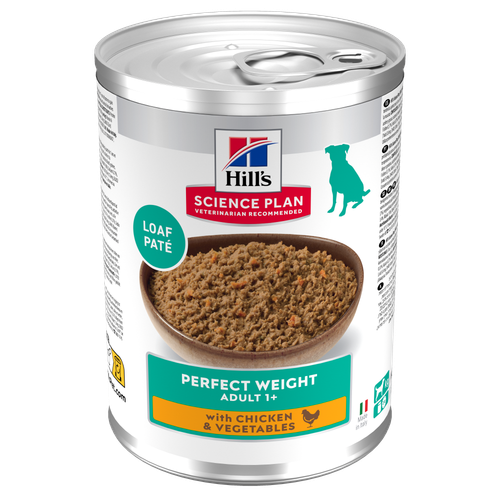 Perfect Weight Adult Dog Food with Chicken & Vegetables
Perfect Weight Adult Dog Food with Chicken & VegetablesHill's Science Plan Perfect Weight Adult Dog Food with Chicken & Vegetables ia a complete premium dog food for dogs prone to weight gain or who are slightly overweight. This savoury tinned loaf is enriched with ingredients that support healthy weight maintenance & long-lasting weight support.
Shop Now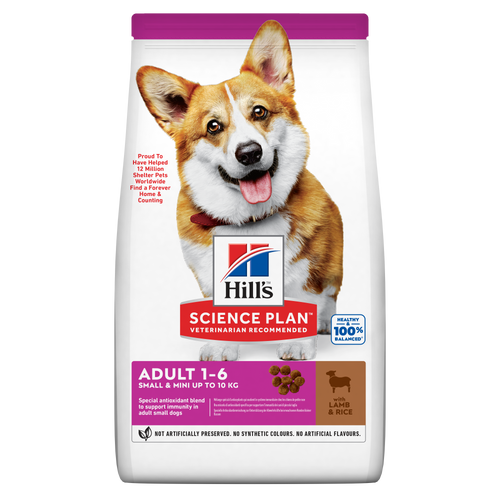 Small & Mini Adult Dog Food
Small & Mini Adult Dog FoodHill's Science Plan Small & Mini Breed Adult Dog Food with Lamb & Rice is a complete pet food, specially formulated with ActivBiome+ Multi-Benefit Technology.
Tailored nutrition for the unique needs of small dogs during the prime of their life.Shop Now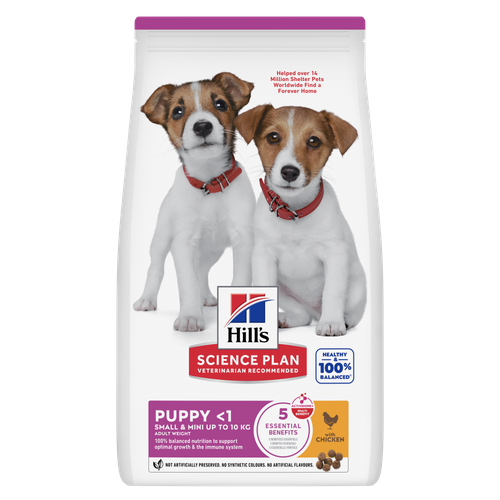 Small & Mini Puppy Dog Food
Small & Mini Puppy Dog FoodHill's Science Plan Puppy Small & Mini Breed Dog Food with Chicken is a complete pet food, specially formulated with ActivBiome+ Multi-Benefit Technology.
100% balanced nutrition to support optimal growth & the immune system.Shop NowFeatured products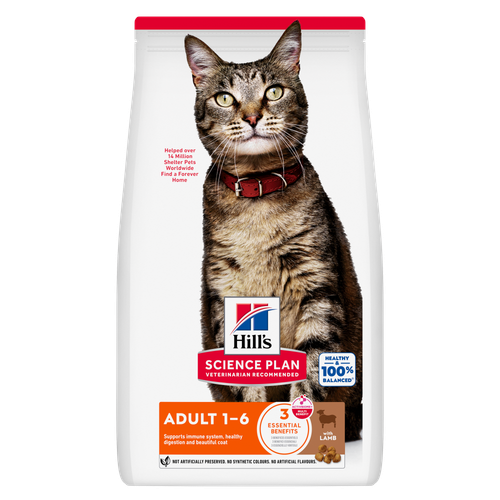 Adult Cat Food
Adult Cat FoodHill's Science Plan Adult Cat Food with Lamb & Rice is a complete pet food, specially formulated with ActivBiome+ Multi-Benefit Technology.
This food is specially formulated to fuel the energy needs of cats during the prime of their life.Shop Now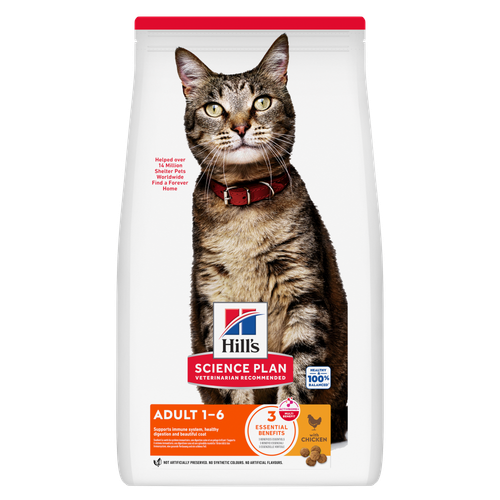 Adult Cat Food
Adult Cat FoodHill's Science Plan Adult Cat Food with Chicken is a complete pet food, specially formulated with ActivBiome+ Multi-Benefit Technology.
This food is specially formulated to fuel the energy needs of cats during the prime of their life.Shop Now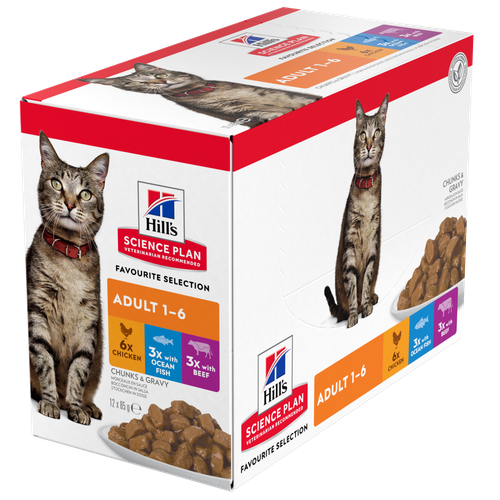 Feline Adult Wet Food
Feline Adult Wet FoodTender chunks in gravy for cats, with high-quality protein to maintain lean muscle. With vitamin E and omega-3s & -6s for healthy skin and balanced minerals to support healthy vital organs.
Shop Now -
Dog
- Dog Tips & Articles
-
Health Category
- Weight
- Food & Environmental Sensitivities
- Urinary
- Digestive
- Joint
- Kidney
-
Life Stage
- Puppy Nutrition
- Adult Nutrition
- Senior Nutrition
Cat- Cat Tips & Articles
-
Health Category
- Weight
- Skin & Food Sensitivities
- Urinary
- Digestive
- Kidney
-
Life Stage
- Kitten Nutrition
- Adult Nutrition
Featured articles Show some love with wet foods: a great choice for pets with health issues
Show some love with wet foods: a great choice for pets with health issuesShow some love with wet foods: a great choice for pets with health issues.
Read More Proteins
ProteinsTo make a protein, amino acids are linked together in a long chain. The chain is then bundled into to a three-dimensional structure, like a tangled ball of yarn.
Read More The Right Diet For Your Pet
The Right Diet For Your PetIn people, the right diet is very important. If you are eating the wrong way for your metabolism, activity level, age and lifestyle you could end up with health issues.
Read More -


There are plenty of pet food brands that advertise their brand of cat or dog food for a healthy coat, but how do you really know which will provide the right nutrition for your pet? As a responsible pet parent, you want to feed your dog or cat food that helps them thrive. Looking for a few key items on a pet food label might help you know if the food you choose promises a certain benefit. However, choosing a dog or cat food for a healthy coat isn't the only way to make sure your pet's skin and coat are in top shape. Learn how nutrition, environmental factors and grooming can all keep your pet looking sleek and feeling perky.

Itching to Find the Perfect Food?
Maybe your dog or cat has already shown signs of sensitive or itchy skin, or maybe you are looking to change to a food that promotes all-around good health, skin and fur included. Whatever the reason, be careful not to focus on just one or two key ingredients or needs. Some pet parents look for high levels of fat in cat or dog food for a healthy coat. Although ingredients like fish oil are common in cat food for a healthy coat, for example, your furry friend still needs a good balance of vitamins, minerals, protein, and carbohydrates. The truth is, well-rounded meals will already protect most cats and dogs from skin and coat troubles. Beauty really does start on the inside.
If you do look at the ingredients and nutrient profiles on your pet food packaging, here are some of the more common nutrients that help promote healthy skin and coats in pets:
- Omega-6: This nutrient is a fatty acid that helps give shine to your pet's coat and replace essential oils in their skin.
- Omega-3: This nutrient, typically found in ingredients like fish oil, has an anti-inflammatory effect that can help to relieve itchy or inflamed skin. It’s a common ingredient in pet foods formulated for dogs with allergies.
- Biotin: This B-complex vitamin helps promote healthy tissue growth.
- Copper: This nutrient helps maintain hair colour and keeps the coat soft and shiny.
- Vitamin E: This vitamin is a natural antioxidant that helps protect your pet's skin against free radicals that could be damaging to skin cells.
However, if you've been feeding your pet a quality food with a good balance of nutrients and you still notice drier skin, dandruff flakes or dull-looking fur, it may be time to talk to your veterinarian. Your pet might need a change in food or ingredients. However, never make any changes without first talking to your vet.
The first thing to look for in a pet food to promote healthy skin and coat is one that is made with high-quality ingredients and promotes complete, balanced nutrition. This alone can help promote a more luxurious and lustre-filled coat. If your pet is scratching a lot or has persistent skin issues, it's a good idea to talk to your veterinarian to help determine the next steps. They can help determine the cause of the itch and recommend a food formulated for sensitive skin, or a dietetic food specially formulated to promote healthier skin and coats.


Tasty Tips
Young pets may need several visits in their first year for vaccinations. Adult pets generally benefit from annual check-ups, while senior or special-needs pets might require more frequent visits.
What Does a Healthy Coat Look Like?
What signs should you look for in a healthy coat? For starters, you should get to know your pet's unique characteristics. Be sure to do a head-to-paws check daily for both cats and dogs, and brush your pet at least once a week. For dogs, brushing more often (even daily) helps spread natural oils throughout the coat and untangle mats. Cats (and your carpet) also benefit from reduced hairballs and the cuddle time they get from being groomed.
Cats are devoted self-groomers, so an unkempt coat may be a sign your kitty isn't feeling their best. Osteoarthritis could be leading to painful joints and preventing your cat from grooming certain spots, and a dull, greasy or matted coat can also point to health problems or a lack of essential nutrients. A stressed cat can also over-groom and end up pulling out tufts of their own fur.
Grooming needs for dogs tend to vary by size and breed. The PDSA explains that a dog with long hair or a plush coat, like a husky, may need daily brushing, while a short-haired dachshund may be fine with a weekly brush. Blue Cross says it’s best to leave as much time as possible between washing to avoid drying out your dog’s sensitive skin. Unless they’re particularly dirty or they roll in something smelly, they recommend letting the natural oils in your dog’s coat do most of the work. Dogs with thinner, light-coloured skin can also be more susceptible to skin irritations like insect bites, seasonal allergies and, notes the PDSA, sunburn. If you have a lovable mutt, reading some guidelines for caring for short and long hair can help establish a baseline.
When brushing your cat or dog, keep an eye out for:
- Clumps of fur falling out or bald patches
- Dry, red or irritated skin
- Sores or rough areas
- Greasiness
- Little black or white specks, which could be ticks or flea eggs
If none of these things appear, your pet likely has a healthy coat. However, if you do notice any of those symptoms, it's time to look deeper to determine the cause of your pet's coat issues.

Still a Head-Scratcher? Talk to Your Vet
If you notice your pet scratching their ears or constantly licking themselves, it's possible something in their surroundings is causing the irritation. Your vet will be able to look at the condition of your pet's coat and skin and determine if additional testing is needed. For dogs with irritation and itchy skin, the Merck Veterinary Manual explains that your vet will look for common causes like parasites (fleas, ticks or mites), bacterial infections, fungal infections, seasonal allergies or environmental irritants. You can help your vet narrow down the possibilities by taking an inventory of any new cleaning products, air fresheners, colognes or soaps you've introduced into your house, or any changes you’ve made to your pet’s routine, e.g. a new walking route. Depending on the cause, your pet may need solutions like antibacterial medication, antifungal shampoo or antihistamines.
If your vet rules out all outside factors, they may recommend reviewing the contents of your pet's current and past foods. They might suggest feeding a special food to determine if your pet has a food intolerance or allergy, or supplementing your pet's nutrition with a missing vitamin, antioxidant or fatty acid. Since nutrition plays a key role in skin and coat health, it is important to keep your dog or cat on any special meals your vet recommends. Even if the condition improves, do not go back to other food without first discussing it with your vet. Don't spend months or years searching for dog food for a healthy coat; get your pet to the vet early and often to manage any skin and coat issues.
You are the start of a healthy future for your pet, inside and out. Through good nutrition, proper grooming and regular vet checkups, you can keep your dog or cat's coat and skin healthy and vibrant for years.


Chrissie Klinger is an educator, writer and mother of two children, three dogs and three cats. Her dog Jake loves sitting on her lap every chance he gets! She enjoys living an active and eco-friendly lifestyle in rural Pennsylvania.
Related products
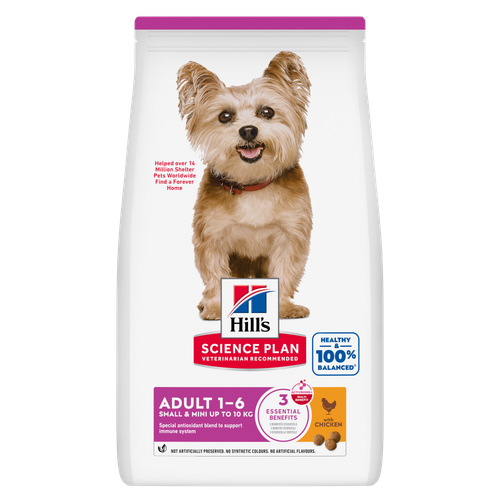
Hill's Science Plan Small & Mini Adult Dog Food with Chicken is a complete pet food, specially formulated with ActivBiome+ Multi-Benefit Technology.
Tailored nutrition for the unique needs of small dogs during the prime of their life.

Hill's Science Plan Puppy Small & Mini Breed Dog Food with Chicken is a complete pet food, specially formulated with ActivBiome+ Multi-Benefit Technology.
100% balanced nutrition to support optimal growth & the immune system.

Hill's Science Plan Small & Mini Breed Adult Dog Food with Lamb & Rice is a complete pet food, specially formulated with ActivBiome+ Multi-Benefit Technology.
Tailored nutrition for the unique needs of small dogs during the prime of their life.

Hill's Science Plan Perfect Weight Adult Dog Food with Chicken & Vegetables ia a complete premium dog food for dogs prone to weight gain or who are slightly overweight. This savoury tinned loaf is enriched with ingredients that support healthy weight maintenance & long-lasting weight support.
Related articles

In people, the right diet is very important. If you are eating the wrong way for your metabolism, activity level, age and lifestyle you could end up with health issues.

Show some love with wet foods: a great choice for pets with health issues.

Learn why nutrients like antioxidants & amino acids can help improve your pet's immune system, as well as top antioxidants to look for in pet food.

To make a protein, amino acids are linked together in a long chain. The chain is then bundled into to a three-dimensional structure, like a tangled ball of yarn.

Put your pet on a diet without them knowing
Our low calorie formula helps you control your pet's weight. It's packed with high-quality protein for building lean muscles, and made with purposeful ingredients for a flavorful, nutritious meal. Clinically proven antioxidants, Vitamin C+E, help promote a healthy immune system.
Put your pet on a diet without them knowing
Our low calorie formula helps you control your pet's weight. It's packed with high-quality protein for building lean muscles, and made with purposeful ingredients for a flavorful, nutritious meal. Clinically proven antioxidants, Vitamin C+E, help promote a healthy immune system.

